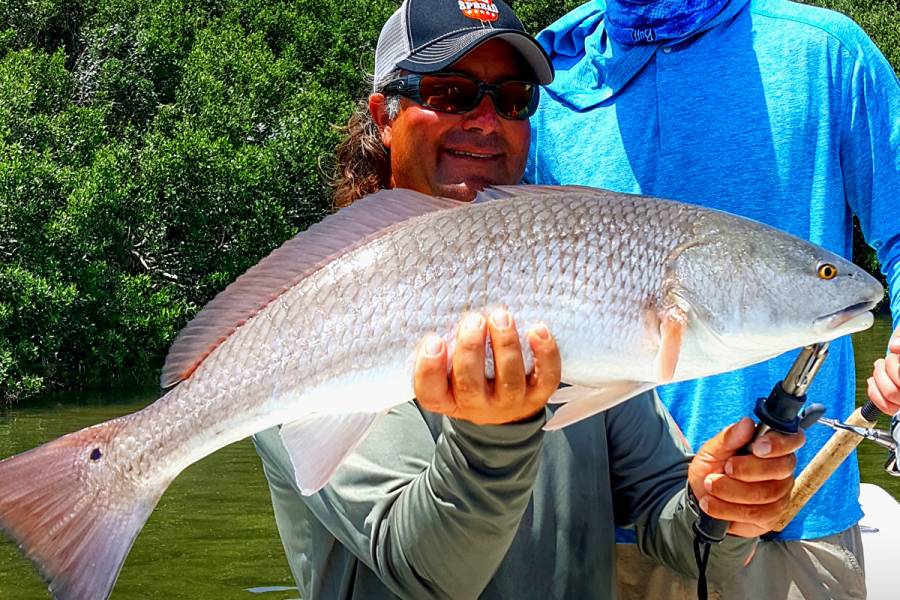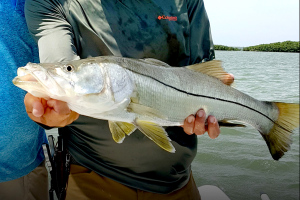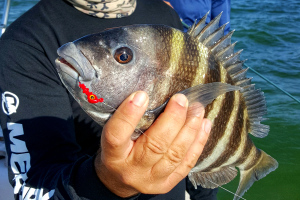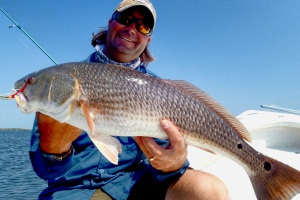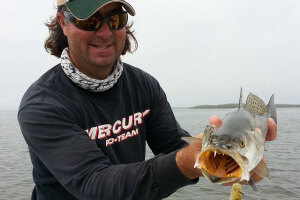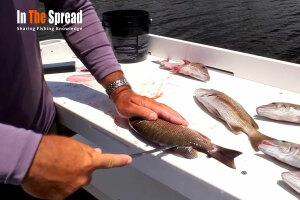The triple tail fish, also known as the blackfish, is a fascinating aquatic creature in Florida's Big Bend fishing communities. Known for its distinctive three-lobed tail, the fish is known for its mesmerizing dance and its fascination with floating structures. Anglers use patience and technique to catch the fish, using Fish Attracting Devices (FADs) and shrimp. However, stewards of the ocean must ensure the FADs are retrieved and stored for future use.

Triple Tail Fish Time is Here
In a world where the vastness of the ocean keeps revealing its secrets, a new aquatic marvel has emerged onto the scene, capturing the hearts and lines of anglers far and wide: the triple tail fish. This enigmatic creature, also known as the blackfish, is making waves, quite literally, in the fishing communities of Florida's Big Bend. As the tides of time flow, the tripletail's tale is one of intrigue, beauty, and a relentless pursuit.
Learn More From William Toney
The Triple Tail Fish: A Portrait
The triple tail fish, or tripletail as it is fondly called, is a sight to behold. Characterized by its distinctive three-lobed tail, which lends it its name, this fish exhibits a mesmerizing dance as it flits in the water. Its presence is often felt up and down the Big Bend, a region renowned for its vibrant marine life and rich fishing tradition.
Though many of these triple tails trend towards the smaller side, their size does not diminish the thrill of their chase. The fervor with which local guides in Cedar Key speak of their daily catches is testament to the fish's allure. And just as nature is ever-changing, so too are the favorite haunts of the tripletail. One day, the Spoil Banks in Crystal River may be teeming with them, and the next, the waters around Homosassa and Chassahowitzka claim their allegiance.
The Art of the Catch
For those venturing into the spring feed waters around the major rivers' mouths or the markers in Homosassa and Chassahowitzka, patience and technique are key. While the triple tail's penchant for floating structures like crab buoys, cardboard boxes, and tree or mangrove debris is well known, discerning their preference for specific markers is akin to understanding the notes in a symphony.
One favored method amongst seasoned anglers involves a diligent scan of potential hotspots. Upon spotting a triple tail, they shut down their engines, allowing the boat to drift silently into casting range. Then, with the precision of an artist, cast a shrimp under a cork, luring the fish with an irresistible temptation.
Yet, there's another tool in the arsenal for those seeking the blackfish - the Fish Attracting Devices (FADs). These ingenious devices, often crafted from cinder blocks attached to old, obscure buoys, become the perfect haven for the tripletail. Weaving brown palm fronds into the line adds the finishing touch, creating an inviting habitat. Their preference for the color brown is a quirk that has stood the test of time.
However, with great power comes great responsibility. As stewards of our oceans, it is imperative that once the tripletails have had their fill of the FADs, these devices are retrieved and stored for future use. For those unable or unwilling to undertake this duty, a simple sharing of the GPS coordinates ensures that others, dedicated to the cause, can step in.
In Conclusion
The triple tail fish, with its mystique and allure, beckons to all who seek the thrill of the chase. Whether you're a seasoned angler or a novice eager to learn, the dance with the blackfish promises to be an unforgettable experience. So, as the sun sets on the horizon and the waters of Big Bend come alive with promise, remember: the tale of the tripletail is one that's waiting to be written, with every cast and every catch.
Captain William Toney In The Spread, Instructor
